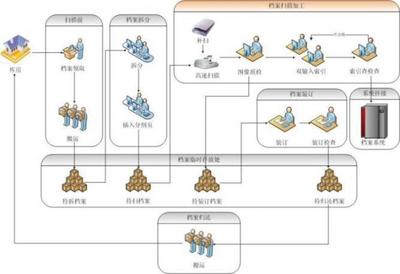Group Brainstorming
Overview
Brainstorming is an individual or group process forgenerating alternative ideas or solutions for a specific topic.Good brainstorming focuses on the quantity and creativity of ideas:the quality of ideas is much less important than the sheerquantity. After ideas are generated, they are often grouped intocategories and prioritized for subsequent research orapplication.
Table of Contents
BasicDescription
Outcomes and Deliverables
Benefits, Advantages and Disadvantages
HowTo
AppropriateUses
Procedure
Participantsand Other Stakeholders
MaterialsNeeded
WhoCan Facilitate
CommonProblems
DataAnalysis Approach
NextSteps
SpecialConsideration
Costsand Scalability
InternationalConsiderations
Ethicaland Legal Considerations
PoliticalIssues
Basic Description
Outcomes and Deliverables
ØA list of ideas or solutions related to a particular problem.
ØThe ideas or solutions organized into groups.
ØSome form of prioritization based on attributes like cost andfeasibility.
Benefits, Advantages andDisadvantages
Benefits
ØMany ideas can be generated in a short time.
ØRequires few material resources.
ØThe results can be used immediately or "preserved" for possible usein other projects.
Advantages
ØIt is a "democratic" way of generating ideas (assuming a goodfacilitator).
ØIt is a useful way to get over "design" blocks that are slowingdevelopment.
ØThe concept of brainstorming is easy to understand.
Disadvantages
ØRequires an experienced and sensitive facilitator who understandsthe social psychology of small groups.
ØRequires a dedication to quantity rather than quality.
ØCan be chaotic and intimidating to introverts.
ØMay not be appropriate for some business or internationalcultures.
How To
AppropriateUses
Brainstorming is useful for:
ØIdentifying a wide range of ideas and solutions to existing or newproblems.
ØCreating group ownership of ideas.
ØImproving group cohesiveness.
Procedure
1. Decide on the question or topic that you willpresent to the group during brainstorming. Avoid questions andtopics that are too narrow (you will only get a limited set ofideas) or too broad. For example, brainstorming on the color thatyou will use for menu background would not be appropriate becauseit is so narrow; brainstorming on how to make customers happy mightbe too broad for a product team.
2. Develop a set of brainstorming rules and reviewthose with the participants. The most basic rules couldinclude:
ØNo verbal or non-verbal criticism.
ØQuantity, not quality is the goal so extreme ideas are welcome.
ØNo belaboring ideas or telling of war stories (be succinct).
ØClarification is OK, but should be focused and brief.
3. Choose the participants for the brainstormingsession. Consider two issues here: heterogeneity is likely to bringout more diversity in ideas, but a group that is too heterogeneous(bringing in outsiders who are unknown to most of the team) may notachieve a comfort level in a short time. Research on brainstormingseems to support a group size that ranges from five to twelveparticipants.
4. Plan how you will record and track the resultsof the brainstorming session. Make sure that you have enough notetaking resources to keep up with a volley of ideas. Have a clearplan for how you will use the ideas that emerged from thebrainstorming session.
5. When you convene the group for a brainstormingsession, describe the topic and procedures for the session. Reviewthe brainstorming rules. Describe what you will do with the data(for example, you might prioritize the ideas at the end of themeeting) and how the results will be used (high priority ideas willbe presented to senior management).
6. Ask if anyone has any questions about thesession and begin the brainstorming by asking participants to callout their ideas as quickly as possible.
7. At the end of the brainstorming, walk throughall the ideas and make sure that the meaning of the idea is clear.You don’t want to be wondering what something meant three dayslater.
8. Categorize/condense/combine/refine.
9. Assess/analyze effects or results and prioritizeoptions/rank list as appropriate. We can do this in number of waysincluding: consensus, rating of all items, and having another groupdecide which ideas to consider further.
10. Agree timescale
11. Control and monitor follow-up.
Participants and OtherStakeholders
The participants are generally a group of peopleinvolved in the design of products. Participants can include a widerange of stakeholders (to ensure some diversity) includingcustomers and users of the product.
MaterialsNeeded
Brainstorming can be done almost anywhere andrequires few materials. Ideas can be written on sticky notes, longrolls of paper, or other inexpensive materials. The ideas can alsobe recorded using online systems. The materials chosen should betransportable (for example, you might want to use a roll of papertaped to a whiteboard rather than use the whiteboard to make iteasy to transport the results).
You can do online brainstorming using blogs,listserv software, or dedicated online brainstorming software.
Essential Materials:
ØSticky notes
Ølong rolls of paper
ØWhiteboard pen
Who CanFacilitate
The basic brainstorming procedure seems simpleenough that anyone could facilitate a session, but the socialdynamics of product groups are both complex and subtle sofacilitators should have some training on how to:
ØMotivate participants.
ØKeep the focus on the topic.
ØUnderstand the issues that affect small group interaction.
A facilitator also needs to understand how toorganize and analyze the data from brainstorming sessions.
Common Problems
ØBrainstorming should focus on the quantity, not quality, of ideasor solutions. Quality assessments can occur subsequent tobrainstorming.
ØFacilitators must not let participants belab or their points orstart telling war stories. This can reduce the quantity of itemsand act as an inhibitor since the stories often include some subtleguidance or implied criticism.
ØA critical rule for brainstorming is "no criticism" of ideas. Thissounds simple, but can be difficult because you can have non-verbalcriticism (negative facial expressions) as well as overt and subtleverbal criticism.
ØShy colleagues may feel inhibited from expressing creative ideas ingroup settings.
ØThe presence of managers may change the focus from quantity ofideas to quality of ideas because of evaluation apprehension --fear of the manager thinking less of his/her colleagues.Facilitators should avoid inviting someone that is generally fearedby the group since this is likely to reduce the quantity ofideas.
ØBrainstorming is more effective when there are short breaks. Forexample if your brainstorming session lasts 30 minutes, you mightinclude a 3-5 minute break after 15 minutes of brainstorming andthen continue brainstorming for 10 more minutes.
ØAsking participants to do some individual brainstorming beforegroup brainstorming can stimulate a greater quantity of ideas. Forexample, you could ask people to list ideas on cards about aparticular questions or topic before the meeting and then bring thecards to the brainstorming meeting.
Data AnalysisApproach
There are several ways to analyze brainstormingdata.
ØAffinity diagramming -- The brainstorming group or anothergroup using brainstorming data, organizes the ideas into relatedgroups. Each of the groups of ideas can be further organized intosub-groups. The groups are often given names. After forming groupsof related ideas, the brainstorming group will choose the bestideas by voting, ranking, or prioritizing the items on multipledimensions.
ØDecision matrix -- A decision matrix (sometimes called a"prioritization matrix") uses the ideas from brainstorming and aset of criteria (feasibility, impact on users, cost) for rating theideas. Participants rate each item on the criteria. The ideas withthe highest average rankings across the criteria are consideredfurther.
Next Steps
After prioritizing the ideas from a brainstormingsession, the best ideas are evaluated further for theirfeasibility. Ideas that aren’t used can be entered into a databasefor future use.
Special Considerations
Costs andScalability
People and Equipment
The cost for people and equipment is low.Brainstorming requires a facilitator and a small group of 5-12people (of course, a single person could brainstorm ideas but asmall group is important for some diversity). If you requirespecial participants who are difficult to find and schedule, youcould drive up the cost.
Group brainstorming at a single location is noteasily scalable beyond 12-15 participants, however, you can employonline brainstorming or use techniques that are suitable forgathering ideas at large meetings (professional conferences forexample).
Time
Brainstorming sessions are generally short, lastingfrom 15 minutes to an hour. Longer sessions are possible, but wouldrequire multiple breaks to prevent brainstorming fatigue.
InternationalConsiderations
Group brainstorming where people shout out ideas ina group may not work in all cultures or with multi-cultural groupswhere there are inhibitions about espousing unusual or"out-of-the-box" ideas. If there are cultural inhibitions, you canuse brainwriting or the nominal group technique.
Ethical and LegalConsiderations
Participants in brainstorming sessions might feelundue pressure to generate "good ideas" if their managers areobserving the session. Trying to generate "good ideas" goes againstthe principle that the shear quantity of ideas is much moreimportant than the quality of ideas.
PoliticalIssues
Since group brainstorming sessions are mosteffective with small groups, there is the potential problem ofpeople feeling left out if they aren’t invited to participate. Onesolution to this issue is to hold multiple sessions and alsoprovide debriefings to stakeholders who couldn’t attend and invitethem to submit ideas as well.
The realities of product development mean that manygood ideas will not be used. Participants need to understand thisand teams should consider ways to keep good ideas available for thenext iteration of design or the next version of the product. Ifparticipants don’t see any ideas from the brainstorming applied toa project, which might result in people feeling as through no onewas listening.
Appendix
Related Subjects
ØBrainwriting: Brainwriting is the generation of ideas by writingthem down on sheets of paper and passing them to other members of agroup who then add their ideas. There is no verbal component to thebrainwriting process.

ØNominal Group Technique: In this variation of traditionalbrainstorming (and brainwriting), participants are given a topic orquestion and asked to write down ideas or solutions privately. Theideas are then listed on a board by going around the table andhaving each person read out their new ideas. When all ideas arelisted publicly, the facilitator asks if any clarification isneeded. If clarification is needed, the person who proposed theidea has 10-30 seconds to explain (but not defend the idea). Aftereveryone understands all the ideas, the participants vote on theideas using a secret ballot. This method is designed to removesocial pressure from participants.
ØBraindrawing: Braindrawing is a technique for gathering visualdesign ideas from a group. There are several variations, but thegeneral approach is to ask everyone in the group to start sketchingout ideas related to a design question. After a short time theideas are handed to someone else who then adds or modifies theprevious sketch. After several rounds, the sketches are collectedand posted on a table or wall (or computer screen). The facilitatorthen reviews the sketches with the group and good ideas andcomments are recorded.
ØVideo brainstorming: Participants use various prototypingcomponents to "act out" possible interaction scenarios with aproduct. The scenarios are videotaped.
ØPosting: In posting, an idea is written down along with two columnslabeled "Advantages" and "Disadvantages". The group thenbrainstorms the advantages and disadvantages.
ØPersonal brainstorming
 爱华网
爱华网


